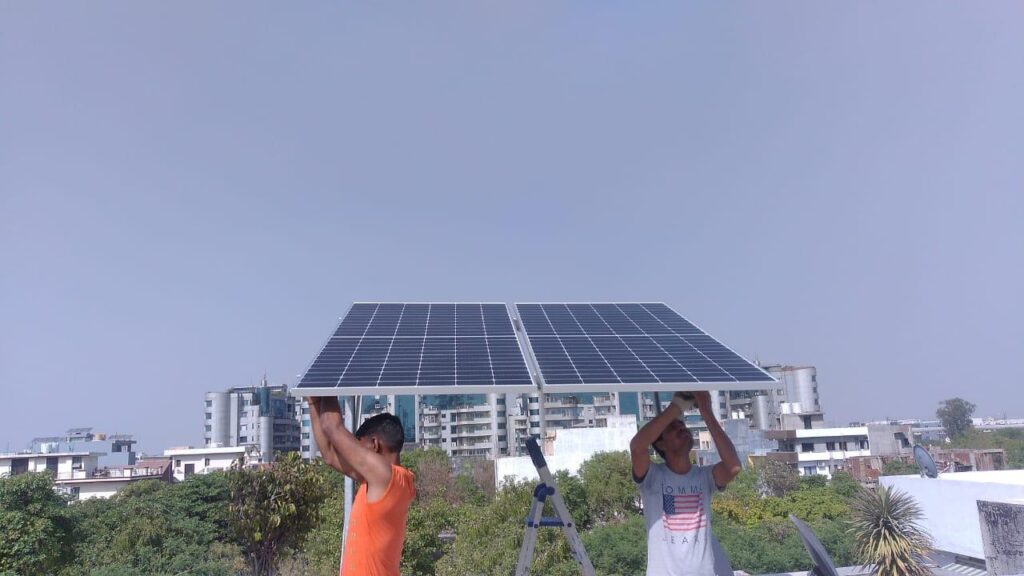"Mastering Solar Panel Installation: Essential Tips and Tricks"
Mastering Solar Panel Installation: Essential Tips and Tricks
In today’s world, where renewable energy sources are becoming increasingly crucial, solar panel installation has emerged as a popular and effective solution for reducing electricity bills and minimizing environmental impact. This blog aims to provide comprehensive insights into the process of solar panel installation, covering essential tips and tricks to ensure a successful setup. Additionally, we’ll delve into the importance of solar modules and how they play a critical role in the efficiency of your solar energy system.
Introduction
Solar energy is not just a buzzword; it’s a revolutionary way to power homes and businesses sustainably. With advancements in technology and decreasing costs, solar panel installation has become more accessible to the average homeowner. However, to fully reap the benefits of solar energy, it’s essential to understand the intricacies of the installation process and the components involved, particularly solar modules. This guide will equip you with the knowledge needed to navigate the complexities of solar panel installation and ensure your system operates at peak efficiency.
Understanding Solar Panel Installation
Solar panel installation involves several critical steps, each requiring careful planning and execution. From selecting the right type of solar modules to ensuring proper placement and maintenance, every detail matters. Here are the key stages of the installation process:
1. Evaluating Your Energy Needs
Before embarking on a solar panel installation, it’s crucial to assess your energy needs. This involves analyzing your electricity usage patterns and determining the size of the solar energy system required to meet your consumption. Consider factors such as peak energy usage times and seasonal variations in energy needs.
2. Conducting a Site Assessment
A thorough site assessment is essential to determine the suitability of your property for solar panel installation. Factors to consider include:
– Roof Orientation and Angle: South-facing roofs with an angle of 30-45 degrees are ideal for maximum solar exposure.
– Shading: Ensure that there are no obstructions like trees or buildings that could cast shadows on the panels.
– Structural Integrity: Your roof must be able to support the weight of the solar panels and mounting hardware.
3. Choosing the Right Solar Modules
Solar modules, or solar panels, are the heart of your solar energy system. They come in various types, including monocrystalline, polycrystalline, and thin-film panels. Each type has its own advantages and considerations:
– Monocrystalline Solar Panels: Known for their high efficiency and sleek appearance, these panels are ideal for properties with limited roof space.
– Polycrystalline Solar Panels: Slightly less efficient but more cost-effective, making them a popular choice for residential installations.
– Thin-Film Solar Panels: Flexible and lightweight, these panels are suitable for unconventional installations, such as curved surfaces or portable setups.
4. Designing the System
The design phase involves determining the optimal layout and configuration of the solar panels. This includes:
– Panel Placement: Arrange the panels to maximize sun exposure and energy production.
– Inverter Selection: Choose between string inverters, microinverters, or power optimizers based on your system’s requirements and budget.
– Electrical Components: Plan the wiring and connection to your home’s electrical system, ensuring compliance with local building codes and safety standards.
5. Obtaining Permits and Approvals
Solar panel installation often requires permits and approvals from local authorities and utility companies. This step ensures that your installation complies with zoning regulations, building codes, and safety standards. Your solar installer will typically handle this process, but it’s important to be aware of the requirements in your area.
6. Installation and Commissioning
The actual installation of solar panels involves mounting the panels on your roof or property, connecting the electrical components, and integrating the system with your home’s electrical grid. This phase should be performed by experienced professionals to ensure safety and efficiency. Once installed, the system undergoes a series of tests and inspections to verify its functionality and compliance with regulations.
7. Monitoring and Maintenance
To maintain optimal performance, regular monitoring and maintenance of your solar energy system are essential. This includes:
– Monitoring Energy Production: Use monitoring systems to track the performance of your solar panels and identify any issues promptly.
– Cleaning the Panels: Regularly clean the panels to remove dirt, dust, and debris that can reduce their efficiency.
– Inspecting Components: Periodically inspect the wiring, inverters, and other components to ensure they are in good condition.
Benefits of Solar Panel Installation
Investing in solar panel installation offers numerous benefits, including:
1. Cost Savings
One of the most significant advantages of solar panel installation is the potential for substantial cost savings on your electricity bills. By generating your own electricity, you can reduce or even eliminate your reliance on the grid, leading to lower monthly expenses.
2. Environmental Impact
Solar energy is a clean, renewable resource that helps reduce greenhouse gas emissions and reliance on fossil fuels. By installing solar panels, you contribute to a more sustainable future and help combat climate change.
3. Energy Independence
Solar panel installation provides a degree of energy independence, allowing you to generate your own electricity and reduce your vulnerability to fluctuations in energy prices and supply disruptions.
4. Increased Property Value
Homes equipped with solar panels often have higher property values and are more attractive to potential buyers. Solar installations can be seen as a long-term investment that enhances the overall value of your property.
5. Incentives and Rebates
Many governments and utility companies offer incentives, rebates, and tax credits to encourage the adoption of solar energy. These financial benefits can significantly reduce the initial cost of solar panel installation and improve the return on investment.
Tips for Successful Solar Panel Installation
To ensure a successful solar panel installation, consider the following tips and best practices:
1. Choose a Reputable Installer
Selecting a qualified and experienced solar installer is crucial for a successful installation. Look for installers with certifications from reputable organizations such as the North American Board of Certified Energy Practitioners (NABCEP). Check customer reviews and ask for references to gauge their reliability and expertise.
2. Optimize Panel Placement
Proper placement of your solar panels is key to maximizing energy production. Ensure that the panels are positioned to receive the most sunlight throughout the day and avoid areas with shading or obstructions.
3. Invest in High-Quality Solar Modules
While it may be tempting to opt for cheaper panels, investing in high-quality solar modules can lead to better performance and longevity. High-efficiency panels may have a higher upfront cost but can provide greater energy output and savings over time.
4. Consider Future Expansion
When designing your solar energy system, plan for potential future expansion. This involves leaving space for additional panels and ensuring that your inverter and electrical components can accommodate increased capacity.
5. Understand Your Warranty
Solar panels and components come with warranties that cover various aspects such as performance, materials, and labor. Understand the terms and conditions of your warranty to ensure you are protected against potential issues.
6. Stay Informed About Incentives
Stay updated on available incentives, rebates, and tax credits that can reduce the overall cost of your solar panel installation. These programs can vary by location and may have specific eligibility requirements and deadlines.
7. Regular Maintenance
Perform regular maintenance to keep your solar energy system operating at peak efficiency. This includes cleaning the panels, inspecting components, and monitoring energy production. Address any issues promptly to avoid long-term damage and reduced performance.
Conclusion
Solar panel installation is a smart and sustainable investment that offers numerous benefits, from cost savings to environmental impact. By understanding the key aspects of the installation process and following best practices, you can ensure that your solar energy system performs optimally and provides long-term value. Whether you’re looking to reduce your carbon footprint, lower your electricity bills, or increase the value of your property, solar energy is a powerful solution for a brighter future. With careful planning and execution, mastering solar panel installation can be a rewarding and impactful endeavor.


